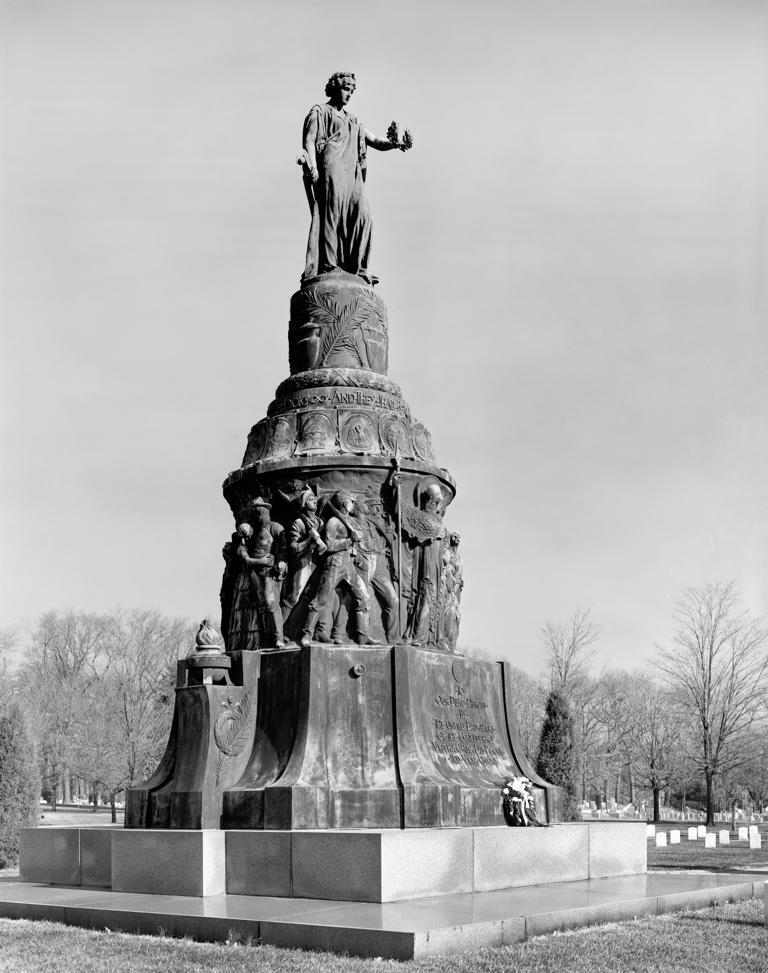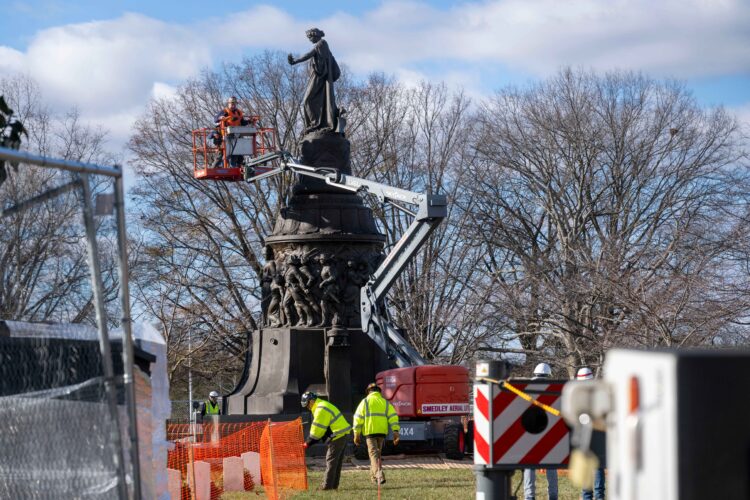A federal judge issued a last-minute restraining order on Monday to temporarily stop the removal of a Confederate monument in Arlington National Cemetery.
The injunction preserving the Confederate Statue, also known as the Reconciliation Monument, came mere moments before demolition work was scheduled to begin on the orders of the Department of Defense.
The push for the Arlington Reconciliation Monument’s removal began in the summer of 2020 in the wake of the Black Lives Matter riots. Heightened racial tensions and a new focus on social justice discourse rekindled old movements to purge all traces of the Confederacy from public view, beginning with government facilities.
Since then, military bases, parks, and other locations named after Confederate officers have been renamed, and monuments to Southern leaders have been torn down. Most recently, a statue of General Robert E. Lee that once stood in Charlottesville, Virginia was cut apart and reduced to slag in a ritualized ceremony hosted by the activists who pushed for its removal.
The 2020 Congressional mandate for removing Confederate monuments set a deadline of Jan.1, 2024, compelling the Department of Defense to remove the Reconciliation Monument from Arlington Cemetery, which the Army oversees.
Learn the benefits of becoming a Valuetainment Member and subscribe today!

Commissioned in 1910 and unveiled by President Woodrow Wilson in 1914, the Reconciliation Monument consists of a bronze statue of a laurel-crowned woman, symbolic of the American South, standing atop a 32-foot pedestal. The female figure leans on a plow while holding a wreath and a pruning hook, representing the Bible verse on the base of the memorial: “They have beat their swords into plough-shares and their spears into pruning hooks.”
The statue also includes carvings of 32 other figures, including ancient deities, Confederate soldiers, and Southern civilians, including a female slave holding an infant and a male slave accompanying his master to war.
The statue, which was designed by Jewish former Confederate soldier Moses Jacob Ezekiel, was meant to be a symbol of national unity and healing in the post-Reconstruction Era. In the modern era, however, it has become a source of significant division.
Despite the objections of more than 40 Congressional Republicans, Defense Secretary Lloyd Austin ordered that the memorial be removed from the national cemetery. Video taken outside Arlington on Monday morning showed cranes and work crews preparing for the demolition work inside a fenced-off area.
The Confederate Memorial in Arlington Cemetery is being dismantled today. pic.twitter.com/p7eLTWkChA
— Citizen Free Press (@CitizenFreePres) December 18, 2023
A statement from the cemetery announced that the statue’s stone base, as well as the surrounding landscape and gravesites, would be left undisturbed.
But just before work began on the removal process, U.S. District Judge Rossie Alston (who was appointed under President Donald Trump) ruled in favor of Defend Arlington, a group affiliated with the Save Southern Heritage Florida organization.
The suit brought against the Army alleged that “the removal will desecrate, damage, and likely destroy the Memorial longstanding at ANC as a grave marker and impede the Memorial’s eligibility for listing on the National Register of Historic Places.”
In light of the restraining order, further demolition has been postponed until a hearing on Wednesday.
In his ruling, Judge Alston wrote that he “the representations in this case be untrue or exaggerated the Court may take appropriate sanctions,” emphasizing that the court’s primary concern is damage to the nearby headstones.
If the removal effort continues later this week, Virginia Governor Glenn Youngkin has promised to relocate the Reconciliation Monument to the New Market Battlefield State Historical Park in the Shenandoah Valley, according to a spokesperson for his office.


















Add comment